Understanding Feline Urination Behavior: A Deep Dive

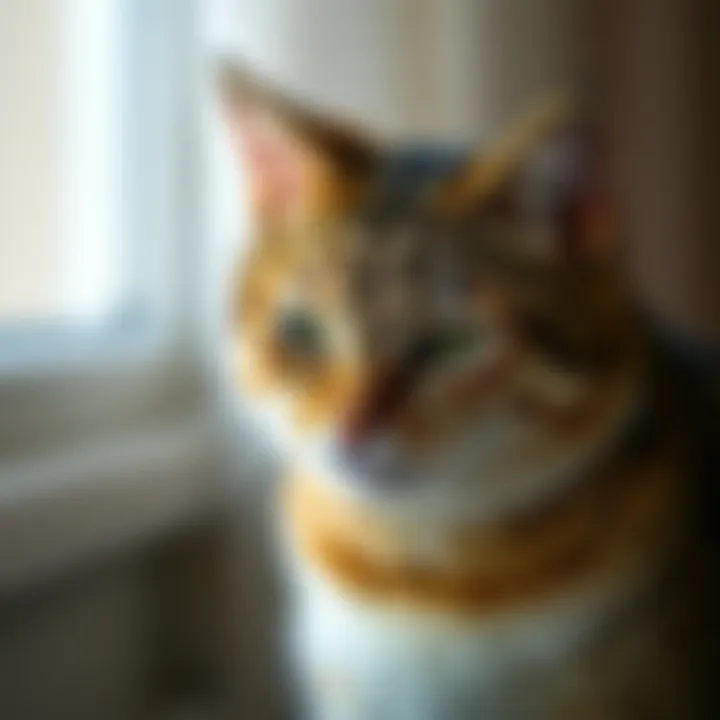
Intro
Feline urination behavior often baffles cat owners and can lead to frustrating situations. As lovable as these creatures are, they can certainly leave a mark on your sanity, especially when it comes to urination inside the house. The reasons for this behavior aren’t as simplistic as they might first appear. In this exploration, we’ll unpack the multi-layered nature of why cats might designate different areas of your home as their own personal litter boxes. From medical issues to behavioral quirks and even environmental factors, countless influences can drive this behavior.
Understanding these motivations is not just a noble pursuit for the curious. For pet owners, it’s a necessity for nurturing a peaceful cohabitation with their feline friends. This piece aims to shed light on these influences and strike a balance between addressing the issue and ensuring that our furry companions are living their best lives.
Pet Care Essentials
Taking care of a cat extends beyond just feeding it and keeping it clean. To gain insight into urination behaviors, let's first examine some essential elements of cat care that contribute to overall health and wellness.
Daily Nutrition Requirements
What you feed your cat is significant, as nutrition directly affects their overall well-being, which can include litter box habits. Cats, being obligate carnivores, require a diet rich in proteins. Opt for high-quality cat food with real meat listed as the first ingredient. Canned food, in particular, has higher moisture content, aiding hydration, which is key for urinary health.
Key Nutritional Considerations:
- Balanced Diet: Essential vitamins and minerals are crucial for health.
- Hydration: Ensure plenty of fresh water is available.
- Consult Your Vet: Regular conversations with a veterinarian can yield specific nutritional needs tailored to your kitty.
Exercise and Playtime
In terms of keeping a cat happy and healthy, play is paramount too. Lack of physical activity can lead to stress, which may manifest in various behaviors, including urination indoors. Daily play sessions not only keep them active but can also relieve potential anxiety.
Suggestions for engaging play:
- Interactive Toys: Toys that mimic prey, like feather wands and laser pointers, grab their attention.
- Scratching Posts: These provide both a physical outlet and can help reduce stress.
Grooming Tips
Regular grooming not only helps keep a cat's coat looking sharp but also fosters a strong bond between pet and owner. Unkempt fur can lead to skin problems that may indirectly influence inappropriate urination. Establishing a grooming routine fosters comfort and checks for abnormalities.
Health and Wellness Check-ins
Routine vet visits are critical, even if your cat appears healthy. Many urinary issues can stem from underlying medical conditions. Urinary tract infections, for instance, can lead to altered urination patterns. Keeping an open line of communication with your veterinarian ensures early detection of potential problems.
Remember: Keeping your pet healthy and happy can often help mitigate behavioral issues, including inappropriate urination.
This foundation lays the groundwork for understanding feline behavior and addressing inappropriate urination. With proper care routines established, we can then delve deeper into the behavior and training aspects.
Prologue to Feline Urination
Feline urination is a topic that might prompt a bemused chuckle or a grimace from pet owners, but understanding it is crucial for maintaining harmony at home. Cats, particularly our beloved companions, communicate through their behavior, and urination—a natural bodily function—can sometimes become quite the conundrum. Addressing this part of feline life isn't merely about preventing messes; it’s about comprehending their unique psychological and physical needs. Through this understanding, pet owners can better provide for their cats, ultimately leading to healthier and happier lives.
Defining Inappropriate Urination
When a cat chooses to urinate outside its litter box, it's commonly labeled inappropriate urination. But let’s not rush to judgment. This behavior often points to deeper issues, whether medical or behavioral. For instance, a cat might find itself facing a urinary tract infection, which can be both painful and disorienting. You may observe a once-steadfast feline suddenly acting out. More often than not, this is a cry for help, rather than sheer defiance.
It’s critical to differentiate between a one-off accident and a lasting issue. If a cat decides to transform the living room rug into its personal restroom, it is just as likely responding to stress or discomfort as it is simply avoiding the litter box. Hence, recognizing that inappropriate urination serves as a red flag is essential. Whether it’s out of desperation or instinct, your feline is trying to send you a message. It’s up to pet owners to decode that message and take appropriate actions.
Prevalence Among Cats
Inappropriate urination is not an uncommon scenario among felines. Statistics indicate that approximately 10 to 15 percent of cat owners report dealing with this behavior at some point. Factors contributing to this include age, health conditions, and even changes in the household environment.
- Age-Related Changes: Older cats may grapple with various health problems including arthritis, potentially making it difficult for them to navigate to the litter box in time.
- Medical Conditions: Various ailments, from infections to kidney diseases, can lead to changes in urination habits. Therefore, ensuring regular vet check-ups is not just advisable; it is a necessity.
- Lifestyle Changes: The addition of new pets, a summer party, or moving furniture can disrupt the usual comfort of a cat’s home.
Awareness of how prevalent this behavior is can ease some of the burdens that come with being a cat owner. It underlines the importance of a proactive approach—knowing when it’s time to investigate further and when it’s a simple case of adjusting to shifts in their world. Ultimately, this piece of knowledge allows owners to provide the support their beloved cats require, instead of unintentionally exacerbating the situation by misinterpreting their concerns.
Key Insight: Recognizing that inappropriate urination is a symptom rather than just bad behavior can change how you approach your cat’s care and nurture your understanding of their life.
Through exploring this section, we lay the groundwork for delving into the essential aspects of feline urination behavior. Recognizing the nuances that surround this natural act provides clarity for caregivers navigating the waters of this misunderstood behavior.
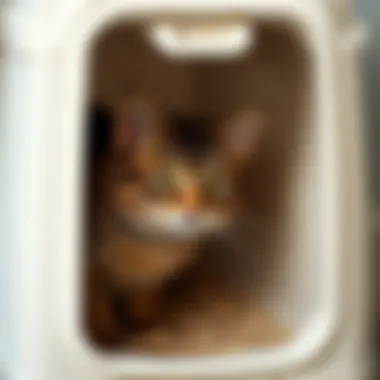
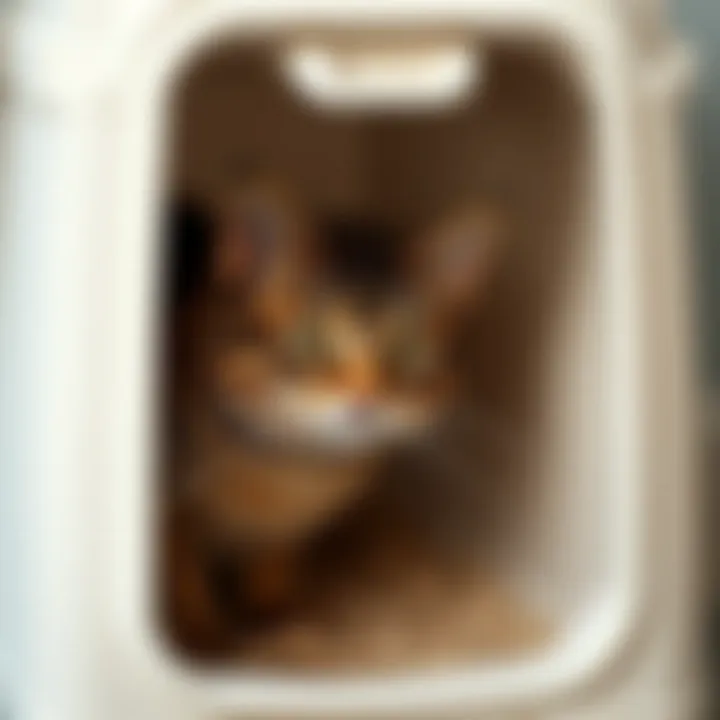
Medical Reasons for Inappropriate Urination
When we talk about inappropriate urination in cats, it often brings to mind behavioral issues or environmental stresses. Yet, it is crucial not to ignore the underlying medical conditions that might be at play. Addressing these medical aspects is essential for any pet owner, as they not only help in resolving the immediate issue but also in ensuring the overall health of the cat.
Understanding these medical reasons is a stepping stone in correcting the urination behavior. For example, persistent accidents outside the litter box can point to a much larger problem, one that could go unnoticed if not addressed clinically. Thus, pet owners can potentially save their furry friends from prolonged discomfort and suffering by reading the signs early.
Here, we delve into four primary medical issues that can lead to inappropriate urination:
- Urinary Tract Infections
- Kidney Disease
- Diabetes
- Age-Related Factors
Understanding Urinary Tract Infections
Urinary Tract Infections (UTIs) are a common culprit when it comes to feline urination issues. These infections can cause pain, urgency, and an overall constant need to urinate. A cat suffering from a UTI often attempts to urinate frequently, but may produce only small amounts each time. Observing any of these signs can indicate a need for a vet visit. The discomfort caused by UTIs might lead to your cat avoiding the litter box altogether, hence the unexpected puddles around the house.
"A cat in distress may choose to mark its territory elsewhere, suggesting a larger health issue than mere behavioral problems."
Kidney Disease and Its Impact
Kidney disease is another significant concern for cat owners, especially in older felines. The kidneys play a crucial role in a cat's health, processing waste and maintaining hydration. When these organs begin to fail, the body tries to compensate by increasing fluid intake, resulting in increased urination. Cats might exhibit excessive thirst alongside unexplained accidents. Regular check-ups can help in diagnosing kidney disease early on, which is vital in managing this condition.
Diabetes and Its Symptoms
Diabetes mellitus is becoming more prevalent among our feline companions, often leading to inappropriate urination. This condition leads to high blood sugar levels, which result in extreme thirst and frequent urination. If a cat experiences increased energy, excessive drinking, and altered urination habits, it might be time to visit the vet. Identifying diabetes early can make a notable difference in treatment and management, affording your cat a better quality of life.
Age-Related Factors
As our feline friends age, their bodies undergo changes that can influence urination behaviors. Older cats may develop various health issues, or simply lose some control over their urinary systems. Cognitive decline can also be a factor; they may forget where the litter box is, leading to accidents. Understanding age-related factors can guide pet owners in managing their older cats more effectively, creating an accommodating environment that considers their needs.
Addressing medical reasons for inappropriate urination helps to nip the problem in the bud, ultimately aiding the furry companion's well-being. Regular vet visits, awareness of health signs, and attentive caregiving can help pet owners ensure their cats live a happy, healthy life.
Behavioral Causes of Urination Issues
Understanding the behavioral causes of urination problems in cats is crucial for pet owners aiming to address this often puzzling challenge. Unlike some medical issues, which may be easier to identify and treat, behavioral problems are frequently layered and complex. A cat’s behaviors are influenced by a myriad of factors, including their environment, social interactions, and even their own temperament.
By delving into these causes, owners can better comprehend why their feline companions may choose to urinate inappropriately. This understanding not only helps mitigate the current situation but also fosters a stronger bond between the pet and their owner. No one wants to feel like they are living with a ticking time bomb, waiting for their cat to relieve itself in an unwanted area. When armed with knowledge, solutions emerge, turning tension into tranquility.
Territorial Marking Behavior
Territorial behavior is instinctual for many cats, and urination often serves as a form of communication. This marking is particularly prevalent in multi-cat households. For instance, a cat may spray in corners of the home to establish its presence, signaling to other cats that this territory is claimed. Many assume it’s a mere nuisance, but understanding this behavior offers insight into the cat’s psyche.
Meanwhile, the scent left behind acts as both a message and an identifier for the cat itself. It’s not just about where they urinate, but why—each marking carries a hint of their essence. Owners can consider providing individual spaces for each pet, which can reduce challenges arising from territorial disputes.
Stress and Anxiety Factors
Cats, much like people, can experience stress and anxiety, which frequently manifests through their behaviors, including inappropriate urination. Changes in their day-to-day life—such as moving to a new home, a new baby, or alterations in routine—can unsettle their emotional balance. For instance, the loud sounds of construction outside may intimidate or distress a sensitive cat, causing it to react in what may seem like an unexpected manner.
Symptoms of stress can include not only unwanted urination but also hiding, aggression, or excessive grooming. Observing these signs can lead owners toward realizing that their furry friends might need a little more support and understanding. Environmental enrichments, such as cat trees or hideaways, can help alleviate some anxiety by giving them a safe haven.
Changes in Environment
Cats thrive on routine. Even modest changes in their environment can have profound effects on their behavior. A new piece of furniture, a re-arranged living room, or even a different air freshener can unsettle a feline. When this happens, a cat may decide to express its displeasure or confusion through inappropriate urination.
Moreover, if the litter box is moved or if the housekeeping takes a different approach, it’s crucial to consider how your cat perceives these changes. To ensure you keep your cat happy, try keeping the litter box in a consistent, quiet location and be mindful of any recent changes around the home.
Introducing New Pets
Bringing a new pet into the household can be a double-edged sword. While it can enhance the overall dynamic, it may also be a source of stress for existing cats. The newcomer could be viewed as a threat, prompting territorial behaviors that include urination in unfavorable places. The existing cat might feel the need to reaffirm their territory, which can lead to behavioral problems if not managed properly.
When introducing a new pet, it’s essential to take gradual steps. Allow them to familiarize themselves with each other's scents before any face-to-face meetings. It’s akin to easing into a cold pool; a slow approach prevents shock and discomfort.


Every cat has a unique personality and responds differently to various situations. Taking the time to observe and support their emotional needs is key.
In sum, understanding the behavioral causes of inappropriate urination is fundamental to fostering a harmonious home with a happy cat. Recognizing factors like territorial instincts, environmental changes, stress, and new introductions equips pet owners with the knowledge they need to promote positive behaviors. Through patience and proper management, many of these issues can be resolved, transforming your home into a peaceful haven for all.
Environmental Influences on Urination
Understanding the environmental influences on feline urination behavior is crucial for maintaining a harmonious relationship between cats and their human caretakers. The environment surrounding a cat can significantly dictate its actions, especially when it comes to where it decides to relieve itself. Factors like the cleanliness of litter boxes, litter type preferences, and the location of these boxes can dramatically impact a cat’s willingness to use them appropriately. A well-thought-out environment can mitigate inappropriate urination issues, contributing to a healthier home environment and a happier feline.
Cleanliness of Litter Boxes
Many cat owners might underestimate just how much a litter box's cleanliness affects their pet's behavior. Cats are inherently fastidious creatures; they prefer a tidy place to do their business. A litter box that is too dirty is a sure way to make your cat look for alternatives. Keep in mind:
- Regular Cleaning: Aim to scoop out waste daily and replace the litter at least once a week. Cats might turn their noses up at a box that smells overly pungent or where there is a buildup of soiled litter.
- Amount of Boxes: The unwritten rule is one litter box per cat, plus one extra. If you’ve got two cats, for example, then three litter boxes are ideal to prevent territorial disputes or litter box aversion.
Establishing a consistent cleaning routine highlights the importance of cleanliness. Cats can be quite particular, and as many a cat owner has found, neglecting this task can lead to accidents in places like your favorite rug or even on your bed.
Litter Type Preferences
Just like people have their favorite snacks, cats have individual preferences when it comes to litter. From clumping clay to natural alternatives, the type of litter can affect whether your feline feels comfortable enough to use the box. It’s advisable to experiment with different litter types to observe which your cat seems to favor.
Factors to consider include:
- Texture: Some cats may prefer finer granules that feel more like sand, while others might dislike rough textures. A smooth and soft texture may make your cat feel more at ease.
- Odor Control: Cats can be sensitive to strong scents. Therefore, it's best to choose litter with minimal or neutral fragrances, or better yet, unscented options.
- Material: Natural litters made from materials like corn or recycled paper often work well, but this can be very individual.
Having a trial-and-error approach will help you pinpoint the right kind of litter that gets your cat back on track with its bathroom behavior.
Location of Litter Boxes
The placement of litter boxes is often overlooked, yet it can dramatically affect a cat's willingness to use them. Cats like privacy but also need their boxes to be easily accessible. Here’s what to keep in mind:
- Quiet Areas: Place litter boxes in quiet places away from loud noises or high traffic areas. Cats are not fond of disturbances when they’re taking care of their business.
- Avoidance of Food and Water Areas: Keep litter boxes away from feeding or watering spots. It’s considered uninviting for a cat to relieve itself in the same vicinity where they eat.
- Multiple Locations: Especially in larger homes, having more than one cat litter box spread throughout the house can ease accessibility issues and reduce anxiety about needing to wait for a turn.
"The key to a successful litter box experience starts with the right environment. Remember, it’s not just about providing a box, but a safe haven for your cat to do its business."
By paying attention to these environmental factors, pet owners can greatly improve their feline’s urination habits. The proper setup might just be what it takes to turn a troublesome situation around.
Solutions for Inappropriate Urination
Dealing with a cat that frequently urinates outside the designated area can be both perplexing and frustrating. Solutions for inappropriate urination are not just about addressing the mishap; they encompass a holistic understanding of your feline friend's needs. Tackling this issue requires a blend of medical insight, behavioral adjustments, and environmental considerations. Each aspect interlocks, forming pathways to create a harmonious living space for both you and your pet.
Consulting a Veterinarian
Seeking the expertise of a veterinarian should be the first step in addressing inappropriate urination. It's easy to assume that a cat’s actions stem from misbehavior, but underlying medical issues often lurk in the background. Vets can check for a range of health problems—urinary tract infections, kidney issues, or even diabetes can manifest in this manner. During the consultation, an experienced vet can provide insights into what’s happening inside your cat’s body and offer tailored solutions. By getting a professional diagnosis, you can effectively decide on a treatment or follow-up plan, ensuring your furry friend receives the care they need. Remember, neglecting this step may allow a minor issue to turn into a significant health concern.
Behavioral Modification Techniques
Sometimes, the root cause of inappropriate urination lies not within medical issues but within feline psychology. Behavioral modification techniques can be instrumental in changing how your cat perceives their environment. One effective method is the use of positive reinforcement, which encourages desirable behaviors over undesirable ones.
Techniques to Consider:
- Reward System: When your cat utilizes the litter box as intended, reward them with treats or affection. This approach establishes a connection between good behavior and positive experiences.
- Routine Establishment: Cats thrive on consistency. Establishing a schedule for feeding and litter box access can reduce anxiety and promote regular bathroom habits.
- Redirecting Stressors: Identify any stressors in your cat’s environment. If loud noises, new pets, or rearranged furniture trigger anxiety, minimizing these influences can lead to noticeable improvements.
Environmental Adjustments
Cats are creatures of comfort, and sometimes their refusal to use the litter box relates directly to their environment. Making thoughtful adjustments can significantly impact their behavior.
Key Adjustments to Explore:
- Litter Box Location: The placement of the litter box is crucial. Ensure it’s in a quiet, easily accessible area away from the commotion of daily life.
- Litter Box Cleanliness: Keep in mind that cats are clean freaks. A dirty litter box can deter even the best-trained feline. Regular cleaning, at least daily, ought to be a non-negotiable practice.
- Type of Litter: Some cats have strong preferences for litter types. Experimenting with different materials, like clumping versus non-clumping or unscented versus scented, can yield surprising results. This process might take some time, but the outcome can be well worth the effort.
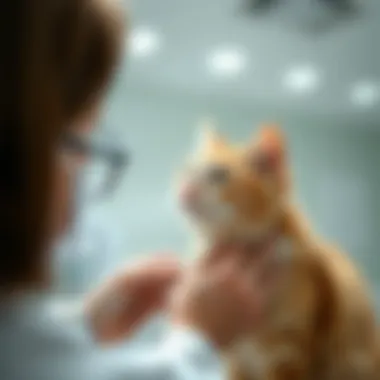
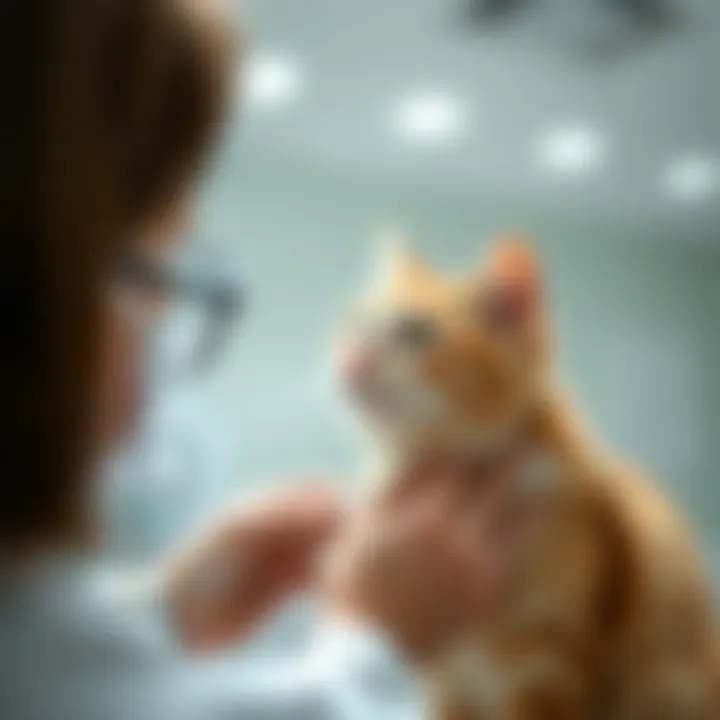
Using Feline Pheromones
If behavioral strategies and environmental tweaks fall short, feline pheromones present another avenue to explore. Synthetic pheromones mimic those naturally produced by cats to communicate with one another, often creating feelings of security and calm. They can be dispensed through sprays, diffusers, or even collars. For instance, products featuring Feliway can help ease anxiety in cats, promoting a more relaxed behavior pattern which may reduce the incidence of inappropriate urination.
Using pheromones is akin to giving your cat a comforting hug throughout the day.
These solutions are interconnected, offering a multi-faceted approach to resolving urination issues. By consulting a veterinarian, employing behavioral modification techniques, making environmental adjustments, and utilizing pheromones, you create a supportive framework that addresses the concerns at play.
In summary, tackling inappropriate urination in cats involves a well-rounded strategy, combining expert medical insight with humane and considerate behavioral practices. Flexibility and persistence are key—change often takes time, but with diligence and care, your efforts will bear fruit.
Preventative Measures for Future Incidents
Preventing inappropriate urination in cats can save pet owners from a heap of worry and hassle. Taking proactive steps helps ensure that these incidents do not become a recurring problem. Understanding the significance of creating a safe and calm space for your feline, combined with regular check-ups and insights into their unique behavior, makes all the difference in fostering a harmonious household and promoting your cat’s well-being.
Creating a Calm Environment
A serene environment is key to a happy cat. Just like people, cats can feel stressed, and this stress can manifest in their litter box behavior. Imagine a cat that feels like it’s living in a pressure cooker, with loud noises or constant visitors disrupting its peace. The first thing any pet owner should consider is how to strip back the potential stressors around the home.
- Soft Spaces: Cozy corners with a bed or blanket can act as a sanctuary for your cat. Choose less frequented areas to let them retreat.
- Sound Control: If your house tends to be loud, consider calming music specifically designed for pets; it can create a soothing atmosphere.
- Routine Matters: Keeping a regular schedule for feeding and playtime can help instill a sense of security in them. Consistency is comforting for cats.
When cats feel at home in their environment, they are less likely to act out through inappropriate urination. A calm space allows the cat to trust its surroundings and feel safe.
Regular Veterinarian Check-Ups
Consistent visits to the veterinarian should never be sidelined; they are the backbone of preventive care. Regular check-ups can catch health issues before they escalate into serious problems like urinary tract infections or kidney disease. A cat that feels physically well is much less likely to develop behavioral issues related to health concerns.
- Monitoring Health: Regular veterinary visits allow for assessment of your cat’s overall health and any subtle changes in behavior that could signal problems.
- Vaccinations and Preventatives: Keeping vaccinations up to date helps ensure that your feline is protected from illnesses that could affect their behavior.
- Advice on Behavior: Vets can offer personalized insights on your cat’s litter box habits and may suggest specific adjustments based on breed or age.
Investing in regular veterinary care is akin to safeguarding your feline’s future and ensuring a sound mind in a healthy body.
Understanding Your Cat's Behavior
The more you grasp your cat's behavior, the better prepared you’ll be to prevent future incidents of inappropriate urination. Cats communicate through a complex combination of body language and vocalizations that, if understood properly, can provide invaluable insights.
- Body Language: Look out for signs of discomfort or agitation. A cat that’s licking its lips or has its ears angled back might be feeling uneasy.
- Vocalizations: If your normally quiet feline is suddenly more vocal, it could be a plea for attention or discomfort.
- Territorial Behavior: Cats may mark territory through urination, especially when their environment changes. Understanding this can help in addressing the root cause.
Being observant of your cat's daily habits can help uncover any underlying issues that might prompt them to stray from the litter box. It's essential to be both observant and responsive to their needs.
A proactive approach not only curtails future incidents but also enhances the bond between you and your feline friend. Taking the time to create a nurturing environment, ensuring health is monitored, and becoming attuned to their behavior are steps every conscientious pet owner must undertake.
Finale: Moving Forward with Knowledge
Understanding feline urination behavior isn’t just a matter of tidying up after your cat; it’s about grasping the entire spectrum of health, emotional needs, and environmental factors inspiring such acts. This section serves as an essential wrap-up, encapsulating the core ideas explored throughout the article while highlighting the importance of taking informed steps moving forward.
Cats communicate in myriad ways, and their urination habits can be convoluted. Recognizing the importance of patience in addressing this issue is paramount. Cat owners should acknowledge that behavioral change pertaining to urination often doesn’t happen overnight. Each cat has its own unique set of experiences that shapes its behavior. Rushing the process or being overly frustrated can lead to misunderstandings between owner and pet.
Furthermore, open communication through observing subtle cues can greatly enhance the bond between pet and owner. Taking the time to understand your cat’s needs — whether they're physical or psychological — can alleviate many issues. Stressful situations, health concerns, or changes in the household can all be catalysts for urination problems. A keen awareness of these triggers allows owners to foster a more supportive environment.
“Patience is not simply the ability to wait – it's how we behave while we’re waiting.”
The overall well-being of a cat hinges on a well-rounded understanding of its needs and behaviors. Having diagnostic insights into their habits can lead you to proactive measures, instead of merely reacting to accidents as they occur. This approach will not only enhance your cat’s quality of life but can also contribute significantly to the owner's peace of mind.
Educating oneself on both medical and behavioral aspects, for instance, paves the way for a healthy lifestyle and improved relationships between owner and cat. The more knowledge you have, the better you can tailor your behaviors and environment to support leash training or litter habits. As stakeholders in their emotional and physical journeys, it's vital to be the voice that advocates for feline companions.
The Importance of Patience
In tackling the tricky territory of feline urination issues, patience acts as a guiding principle. When issues arise, it’s easy to feel overwhelmed or even exasperated. But remember, reflecting with an informed mind is crucial for long-term solutions. Cats are creatures of habit, and sudden changes can leave them feeling anxious. Take your time to observe behavior without jumping to immediate conclusions or corrective actions. Setbacks may happen, but maintaining a calm demeanor will foster an atmosphere of trust.
- Monitor your cat's behavior and identify patterns
- Avoid punishment; this can worsen anxiety
- Gradually implement changes rather than forcing them
Emphasizing Communication with Your Pet
Cats may not speak in human tongue, but they certainly convey immense amounts of information through body language, vocalizations, and even their litter box habits. Understanding the nuances of feline communication encourages stronger connections. Being attuned to what your cat may be trying to express requires an attentive eye.
- Watch for stress signals like hiding or changing eating habits
- Engage them with gentle petting or play, reinforcing positive behavior
- Use verbal reassurance; even a soft tone can provide comfort
Through consistent observation and gentle guidance, communication can evolve into a two-way street, where both you and your cat thrive in harmony. By prioritizing understanding over frustration, both parties can create an enriched, loving space that minimizes unnecessary accidents and strengthens the bond that you share with your feline friend.







